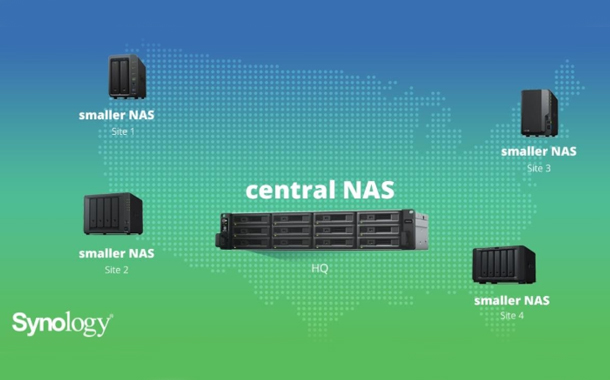To increase productivity and reduce costs.
The enterprise workforce has long been spread across multiple office sites. But today they’re also working from living rooms, airports, coffee shops and other remote locations. According to a recent study by global research company IPSOS, over 57% of Indian employees telecommute on a frequent basis and nearly one-third work remotely every day. From employee’s perspective, cloud-based software benefits people to continue to work from any location, while solving problems like longer commutes and family commitment. From businesses’ perspective, the implementation of likes of Network Attach Storage (NAS) into the existing IT infrastructure can ensure effortless remote file sharing and syncing, data ownership and security, higher levels of communication and teamwork, and long term productivity.
With remote teams, file sharing can be cumbersome and slow down productivity due to poor bandwidth. Moreover, if your organization lacks a centralized data management system, storage usage will increase due to unnecessary redundancies. You’ll also risk losing critical data without centralized backup and recovery.
With the right data management strategy, businesses can turn challenges of the modern workplace into advantages that set you ahead of the competition.

Finding the right data management strategy
Traditionally, businesses have kept data stored in one server or cloud, meaning employees at remote offices would have to deal with slow transfer speeds. These days, multi-site businesses can set a new structure for data storage and management with a large network-attached storage (NAS) device deployed at company headquarters and a smaller NAS at each branch office. From there, you can easily sync files between NAS systems and across offices.
As one example, you could set up rackmount NAS at HQ, which accommodates over a petabyte of storage capacity. For branch offices and other remote locations, you might consider a plus models for SMBs, which offers storage capacity and performance suitable for smaller offices. The ability to scale easily and sync with your central NAS — while using the same software suite — is one of the chief perks of a solution like ours.
While your exact setup might vary, this overall approach to data management yields powerful results. By deploying NAS devices at each business site, employees don’t have to connect to HQ directly, which means they enjoy faster read/write access. To make things even easier, they can map to a network drive and save time (and confusion) by not having to email large files back and forth.
With this new structure, you’ll also reduce resource usage. Since files are synced to the local NAS rather than employees’ individual computers, there will be less redundant files taking up storage space. This also makes it easier to manage and reduce office bandwidth consumption.
Additional strategies for multi-site data management
With a NAS deployed at HQ and each business site, it becomes possible to set up a data backup and disaster recovery plan without having to rent space from another vendor. This not only protects your data in the event of a disaster but also saves you the headache of dealing with multiple vendors, whose license fees can really add up.
You’ll also want to consider a Centralized Management System (CMS), which saves IT admin time and effort by allowing them to manage multiple NAS devices from one central location, rather than having to physically visit each office with a NAS setup. With CMS, IT admins can use a single dashboard to check the status of each server and keep each server’s software up to date, as well as delegate administrator permissions to specific employees, allowing them to manage certain settings on specific servers.
How Krys Group overhauled their file sharing system
Krys Group, a French optical company with over 1,300 shops, sent files through the Internet to a file server. By overhauling its current process, setting up a NAS in each store for file sharing was the perfect solution. Through this new structure, Krys benefitted from a more stable architecture, which in turn saved money, as minimal maintenance was required. Moreover, their IT admin and employees enjoyed simpler system management and higher efficiency.
With a growing business, you’ll inevitably encounter roadblocks, but don’t let the size of your business be your weakness. With the right data management strategy, you can turn your challenges into business opportunities that will drive productivity, reduce costs and — most importantly — keep your data secure.


